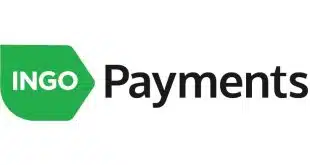Toronto-based loyalty-services and payments start-up nanoPay Corp. has acquired the MintChip digital-currency platform from the Royal Canadian Mint, the organizations announced Tuesday.
The purchase price wasn’t disclosed, but nanoPay says it could be revealed at a later date.
MintChip gained fame in 2012, just as Bitcoin and other virtual currencies were coming onto the scene, as an alternative that had many attributes of Bitcoin, particularly low costs and transaction speed, but not some of the seeming downsides, such as the ability to hide criminal transactions. The currency was designed to support compliance with regulations, such as anti-money-laundering rules and know-your-customer standards.
The Royal Canadian Mint, a federally-established corporation that produces Canada’s coins and money for other countries, even sponsored a contest for software developers to create applications that utilized the MintChip platform.
The Royal Canadian Mint disclosed in mid-2014 that it eventually planned to sell MintChip. NanoPay was the winning bidder in a final field of three that the Mint selected from an initial pool of 10 potential buyers, nanoPay founder and chief executive Laurence Cooke tells Digital Transactions News. Privately-funded nanoPay was founded in 2012.
“This transaction, which was conducted through an open, transparent divestiture process, allows MintChip to move to its natural next step of commercialization in the private sector,” said Sandra Hanington, Royal Canadian Mint president and chief executive, in a statement. “The agreement represents a strong recovery of the investment made for this pre-commercial technology.”
NanoPay plans to work with banks, telecommunications companies, retailers, central banks, payment processors and merchant acquirers, as well as software developers and point-of-sale services providers, to create and distribute MintChip-based products and services. Cooke says he expects some specific services with merchants to be announced in February.
MintChip’s cloud-based technology, which Cooke describes as a platform for the digital replacement of a fiat currency but not an actual virtual currency itself, has uses in mobile payments, person-to-person payments, currency conversions, loyalty programs, and other applications, he says. The technology uses so-called secure asset stores to move funds in any currency.
“They (the Royal Canadian Mint) have got a great technology, and the technology was designed to be regulator-friendly,” says Cooke. “The good news is we’ve benefited from something created in the government, and it really works.”
As an example of its speed, Cooke says MintChip can settle a transaction in 30 milliseconds. As for costs, he says it can charge for online transactions in tiny fractions of a percentage point. A low-margin retailer using MintChip currently paying 3% to 5% for card transactions could easily cut its payment expenses in half, he says.
NanoPay plans to make MintChip’s application programming interfaces available to the developer community and will make its money on small, fixed transaction fees, according to Cooke. MintChip has five patents, with five more pending, and successfully completed a six-month internal trial, nanoPay says.




